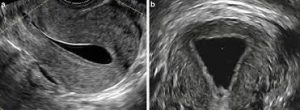#ThursdayThoughts
As promised, each Thursday, we will now offer you a piece of educational, science, or research related information. The purpose of our #ThursdayThoughts post is to share with you fact-based content that can enlighten and assist you on your fertility journey. Enjoy our post! Helping to Create New Beginnings….
What is a Saline Infusion Sonohysterogram (SIS)?
Saline infusion sonohysterogram (SIS) is a procedure to evaluate the lining of the uterus and shape of the uterine cavity. A regular transvaginal ultrasound can pick up many uterine abnormalities, however, more subtle defects which may impact reproduction are better evaluated with SIS. Examples of these types of abnormalities include mullerian anomalies (abnormal uterine shape or formation), intracavitary fibroids, uterine polyps, and uterine scarring. Most irregularities noted on SIS can be corrected with a simple surgical procedure, although some abnormalities may require more complex procedures. SIS is usually done in the office and towards the end of a menstrual period, typically between days 5-9 of a menses so that the menstrual bleeding has stopped. Women who are on birth control such as pills, patch, or Depo injection, can have the procedure done at any time.
The procedure begins with a speculum being introduced into the vagina to locate the cervix. The cervix is then cleansed with betadine or hibiclens and a narrow catheter (thin straw) is placed through the cervix into the uterine cavity. A vaginal ultrasound probe is then inserted to visualize the uterus. Saline is pushed through the catheter into the uterus to evaluate the uterine walls and cavity.
SIS is a safe procedure, however it can cause some uterine cramping or vaginal spotting. Very few women (< 1%) develop a complication, such as an infection. Depending on the type of fertility treatment a patient is going through, SIS might be repeated every 6-12 months. For more information regarding fertility testing and treatment, please call 808-545-2800 to schedule an appointment with one of our physicians, or visit our website at https://www.ivfcenterhawaii.com/
ReproductiveFacts.org. American Society for Reproductive Medicine, 2015.
Normal SIS

Abnormal SIS
